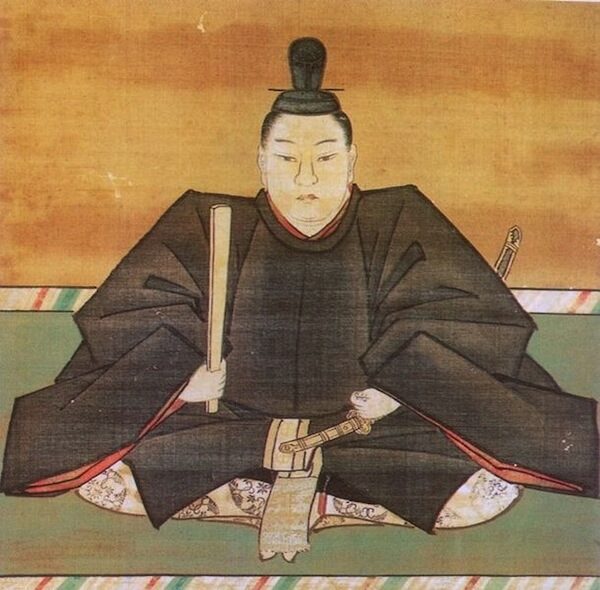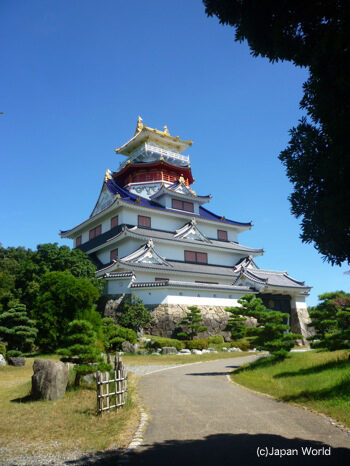In the northeast of Okayama Prefecture on the border of Hyogo Prefecture, is the quaint little village of Miyamoto in Mimasaka. Very few cars traverse the narrow roads between ancient-looking farmhouses. A cold wind blows through the leafless trees in the winter, and cicadas sing loudly in the hot, humid summer. Time has barely changed the sleepy village, and it would seem that nothing extraordinary, or of note ever happened here.
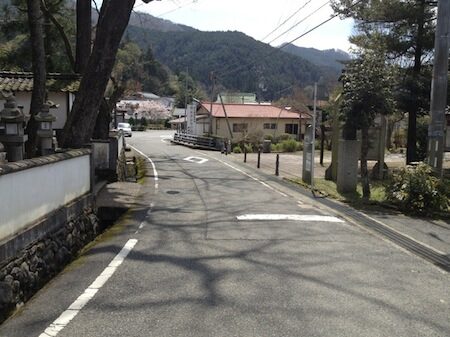
(Myamoto, Mimasaka)
Except that the greatest of all samurai swordsmen, Miyamoto Musashi was born here.
Born Shimnmen Takezo in 1584, the 13 year old Musashi entered his first duel against a wandering samurai named Arima Kihei, and beat the man dead with a wooden staff Not long afterwards, he left the village to participate in the Battle of Sekigahara, and over the next few decades he traveled the country looking to improve his techniques taking place in over 60 duels and battles, never to be defeated.
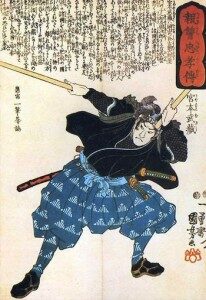
He was an accomplished painter, carver, metalsmith and writer, penning the world renown book on strategy known as the Go Rin no Sho, or Book Of Five Rings. His exploits became legendary thanks to Japanese author Yoshikawa Eiji’s serialized newspaper chapters that eventually went on to become best selling books.
Miyamoto, and Musashi No Sato is where the story began, and for many fans and followers of the swordsman and his teachings, this town is a must see.Access is best made via train. The Chizu Express lines’ Miyamoto Musashi Station. The unattended station straddles a single line between Hyogo’s Kamigo in Ako and Chizu in Yazu District, Tottori Prefecture, and opened in 1994.
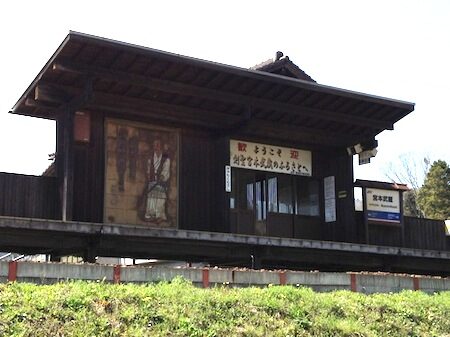
(Miyamoto Musashi Station)
Beside a small gateway beside the station, the statues of a young Musashi and his friends greet you. A walk through the town will take you all of 20 minutes at a slow pace. There really isn’t a great deal
to see.
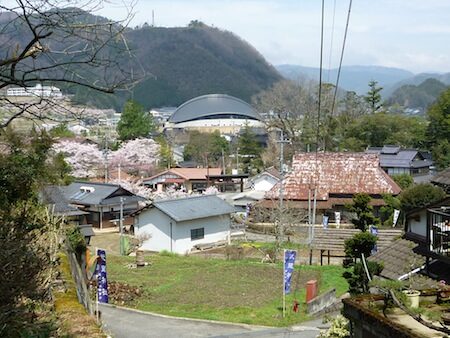
(Myamoto, Mimasaka)
The house of his sisters’ family can still be found, and their descendants continue to live in Miyamoto. The site where Musashi was born, and that of his friend, Hon’iden Matahachi can be seen and nearby,
Miyamoto Musashi Shrine stands overlooking the otherwise inconspicuous town.

(Musashi’s sister’s house)
There are a number of sites familiar to readers of the Yoshikawa book to be seen in the quiet country town. The small shrine where Musashi is said to have been inspired to develop his two sword styles of fighting also remains in the farming villages’ central area.

(Musashi Shrine)
A small museum dedicated to the great swordsman is usually open, but for a swordsman of such renown, and a hero to so many, the museum is rather disappointing.
The only real artifact of note is one of the few tsuba sword handguards forged by Musashi. For the martial artist inclined, the local dojo, or martial arts training hall is most impressive.
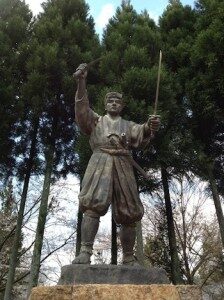
Shaped like a samurai helmet, the visitor with the right connections and speaking ability may be able to participate in a training session. Lessons in the famed Two Sword style created and perfected by Musashi are also taught here. A fine statue of Musashi with both swords drawn can be also found in the Miyamoto Musashi Village area.
While Miyamoto Musashi’s birthplace has yet to become a fully fledged tourist destination, you don’t come here to see much, you come here to feel the history, and to walk in the footsteps of the greatest samurai of them all.
